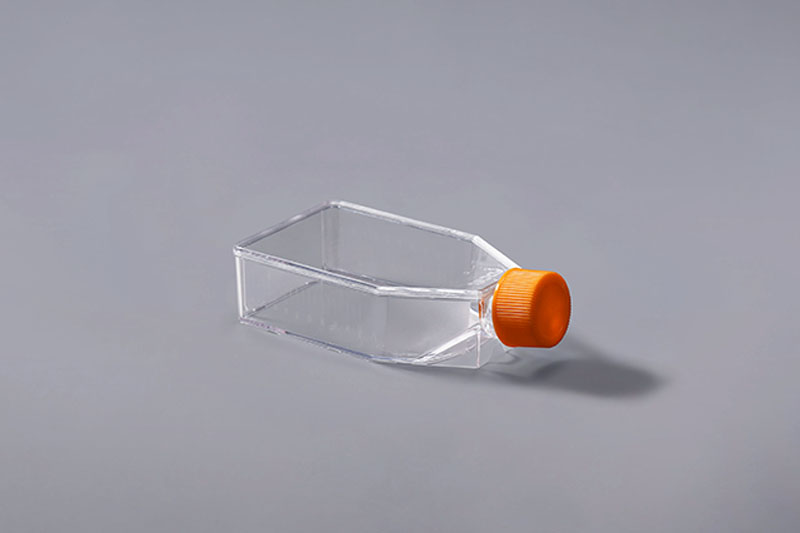With the continuous progress of biotechnology, cell culture technology has also been widely used in genetics, immunology, oncology, virology, molecular biology and other fields. The cell culture flask is a commonly used container for adherent culture. The growth of cells requires specific conditions, and the appropriate temperature is the basis.
Common specifications of cell culture flasks include T25cm2, T75cm2, T175cm2, T225cm2, small-sized bottles are used for smaller-scale cell culture, and larger-sized bottles can be used for slightly larger-scale cell culture experiments. Since adherent cells need to be attached to the surface of the support to grow, and the material of the bottle itself is hydrophobic, it is suitable for the growth of adherent cells after TC treatment.
FuDau T75 Cell Culture Flasks
Generally, the suitable temperature for mammalian and avian cells to be cultured in vitro is 37-38°C. Unsuitable ambient temperature will affect the growth of cells. The tolerance of cells to low temperature is stronger than that of high temperature. At low temperature, the metabolic activity and mitotic capacity of cells are reduced. If the temperature is not lower than 0 °C, although the cell metabolism is affected, there is no damage; at 25 to 35 °C, the cells grow at a slow rate; but if it is placed at 40 °C for several hours, it is not only unfavorable for cell survival and growth, and even lead to its death.
FuDau T225 Cell Culture Flasks
To sum up, cells are very sensitive to temperature when they are cultured in vitro. Too high or too low temperature is not conducive to their growth. Appropriate temperature is the key to ensure good growth of cells in cell culture flasks.
The FAI climbed 5.9 percent year-on-year in the first 11 months of 2018, quickening from the 5.7-percent growth in Jan-Oct, the National Bureau of Statistics (NBS) said Friday in an online statement.
The key indicator of investment, dubbed a major growth driver, hit the bottom in August and has since started to rebound steadily.
In the face of emerging economic challenges home and abroad, China has stepped up efforts to stabilize investment, in particular rolling out measures to motivate private investors and channel funds into infrastructure.
Friday's data showed private investment, accounting for more than 60 percent of the total FAI, expanded by a brisk 8.7 percent.
NBS spokesperson Mao Shengyong said funds into weak economic links registered rapid increases as investment in environmental protection and agriculture jumped 42 percent and 12.5 percent respectively, much faster than the average.
In breakdown, investment in high-tech and equipment manufacturing remained vigorous with 16.1-percent and 11.6-percent increases respectively in the first 11 months. Infrastructure investment gained 3.7 percent, staying flat. Investment in property development rose 9.7 percent, also unchanged.
 English
English




















































